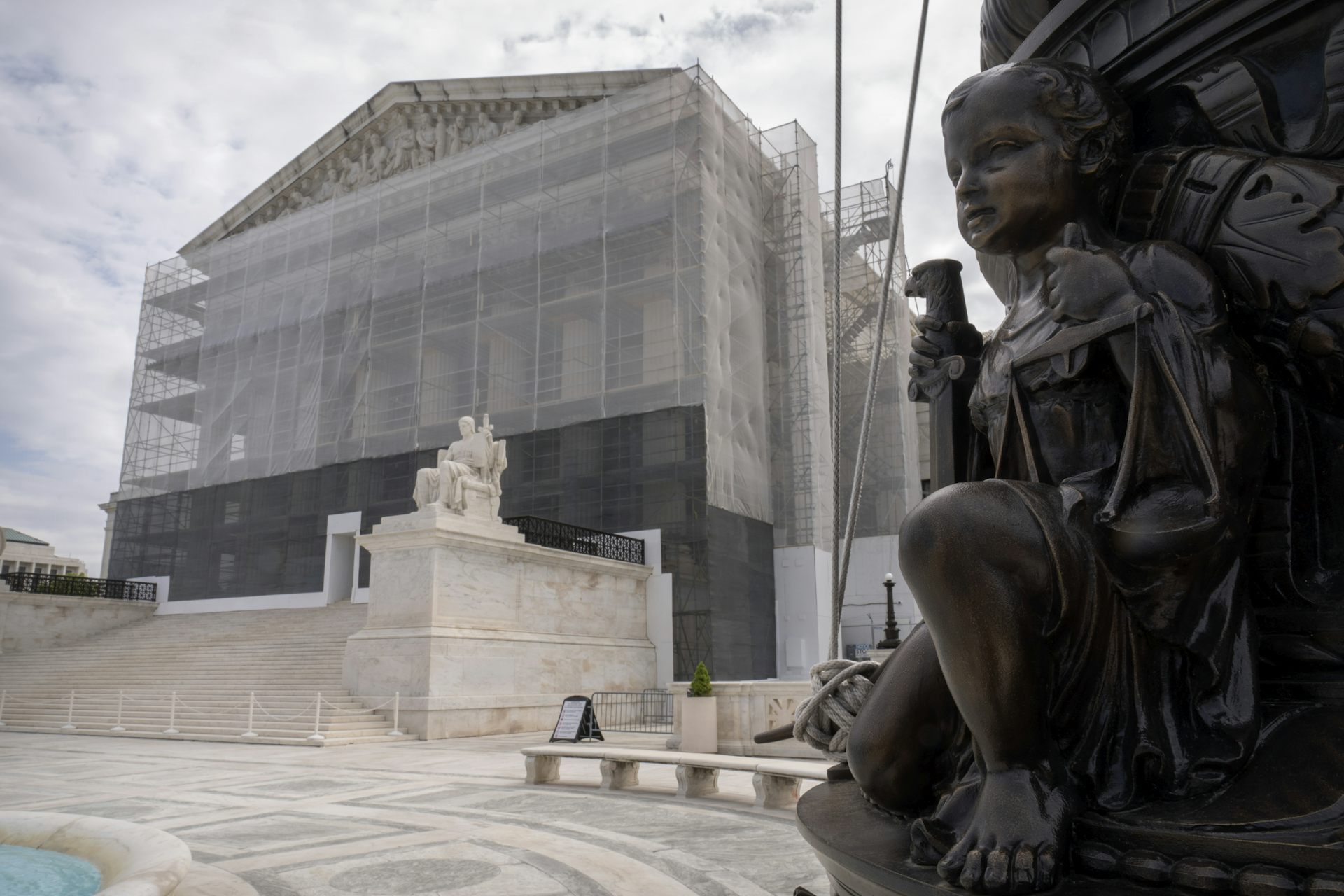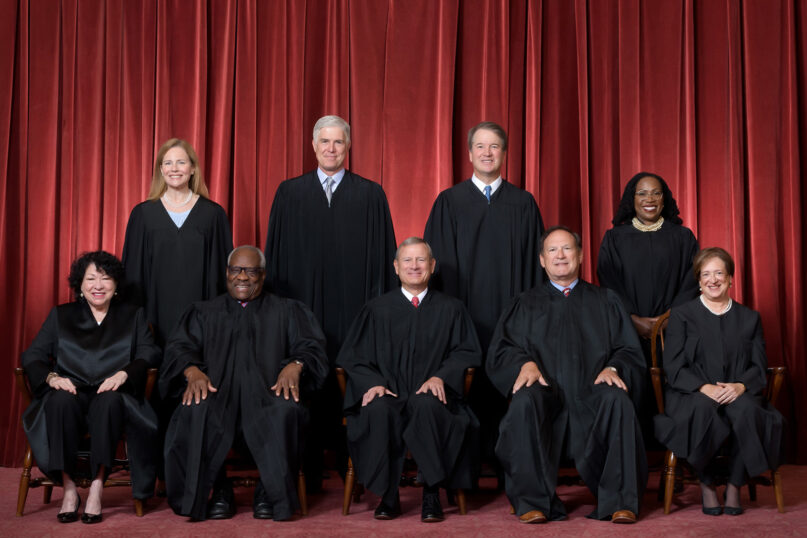
(RNS) — Most Americans believe religious liberty is a good thing and would be scandalized to know how some religious leaders, and even political leaders, are actively distorting its meaning to expand power. To be clear, not all Christians are involved. The current perversion of “religious liberty” is being foisted on the public by a minority of Christian believers as part of a deal with the Trump administration that trades their votes for religious liberty on their terms.
We should more properly talk about the Trump administrations, plural, since the reinterpretation of religious liberty was set up by President Donald Trump’s first-term nominations to the U.S. Supreme Court. The effect has been felt, however, in the current term, in the Trump court’s transparently biased decisions, abetted by the incessant preaching by the likes of Vice President JD Vance and Defense Secretary Hegseth, the official deification of Charlie Kirk and incessant deference to religious-right beliefs.
It’s important to note that the religious right’s naked grab for power has come as the religious right has lost in the wider culture. On LGBTQ rights (particularly on same-sex marriage), women’s rights and abortion, voters have made their voices known. Some 70% of the American people support all of these causes, despite decades of condemnations from the religious right. Having seen their claim to represent a “moral majority” disproved, this minority now seeks the brute power of an authoritarian administration to coerce the rest of us.
The evidence is not difficult to see. At one time, the court’s First Amendment establishment clause decisions held together a country where diverse believers had the right to believe whatever they chose and, as importantly, lacked the power to impose their beliefs on others. The justices understood the separation of church and state to mean that believers were bound by the rule of law, deterred from coercing others for their faith, and there was a social value in the diversity of religious belief.
Believers, meanwhile, were accountable to the public good. They couldn’t avoid paying federal taxes applied to everyone else; they couldn’t commandeer federal land they didn’t own; they had to participate in the social security system to get benefits just like everyone else; they couldn’t use illegal drugs in religious services and expect not to be fired for committing a crime. It was a given that even religious believers could not violate child labor laws or deny lifesaving vaccines to their children. If a law applied to everyone else, it applied to any believer. If a law passed on believers’ behalf harmed others, it was unconstitutional.
But in recent years, the religious right has strived to make its kind of Christian believers the equivalent of “most favored citizens.” It is not enough for these believers to be protected from intentional discrimination and persecution; they also demand to be shielded from the neutral laws that everyone else follows. Christian conservative interests are routinely pushed to rise above public accommodations laws, public health rules and the civil rights laws. Gays are never as important as they are. Neither are women or minorities.

Formal group photograph of the Supreme Court on June 30, 2022. Seated from left are Justices Sonia Sotomayor and Clarence Thomas; Chief Justice John G. Roberts Jr.; and Justices Samuel A. Alito and Elena Kagan. Standing from left are Justices Amy Coney Barrett, Neil M. Gorsuch, Brett M. Kavanaugh and Ketanji Brown Jackson. (Photo by Fred Schilling, Collection of the Supreme Court of the United States)
The right first codified this will to power in the federal Religious Freedom Restoration Act in 1993, which removed the “harm-to-others factor” from the religious liberty calculus. The act’s creation myth holds that it was a bipartisan bill that passed unanimously. Actually, many members of Congress did not begin to understand the agenda hidden in the bill.
The RFRA doctrine first asks whether there is a substantial burden on the believer from the believer’s perspective. Once they establish this standard for “burden,” the government may not enforce the law against them unless the law serves a compelling interest of the government and is the least restrictive means of regulating in the space with respect to this believer.
This essentially narcissistic standard has now permeated First Amendment doctrine as a religious-right Supreme Court prioritizes religious-right beliefs through its selection of cases and permits believers to impose their faith on others regardless of what they are doing to others.
This believer-centered formula undergirds the Christian right’s political war against abortion, trans and gay people, and same-sex marriage today. Even under Roe v. Wade, nowhere in the law was there a mandate that they themselves had to obtain an abortion. Nor, under Obergefell v. Hodges, did they need to be trans or gay or marry someone of the same sex. Their objection is that others in their universe are, whether they be customers or employees.
Under RFRA, for example, when Hobby Lobby’s David Green said the Affordable Care Act’s contraception mandate burdened his religious liberty, it wasn’t that he or anyone in his faith family was forced to use contraceptives they didn’t believe in. His problem was that his employees would use them. He didn’t want to pay for contraception he never would have known they were using.
In a similar turn, Justice Neil Gorsuch wrote a landmark interpretation of Title VII of the civil rights statute in Bostock v. Clayton County, finding that it covers sexual orientation, which was hailed as a pro-LGBTQ decision. Not so fast. In his opinion, Gorsuch blew a hole through the win for LGBTQ people by stipulating that anti-LGBTQ religious business owners would be protected by RFRA.
As a result, a theoretical employer of a talented accountant is now allowed to fire her because she marries a woman. Why? It’s not like she is going to forget how to add and subtract. It’s because they can’t bear to work next to someone their God condemns, Title VII be damned.
This is how the Supreme Court supports the right’s hegemonic agenda. Six justices at the court have not only systematically deconstructed the separation of church and state but transmogrified religious liberty into a privilege to oppress. Under their jurisprudence, a wedding website designer is granted the right to refuse to work with LGBTQ couples; private employers may discriminate against LGBTQ employees and shape women’s benefit packages according to the faith of the employer. Parents may chill LGBTQ books in public schools and have their child refuse the COVID-19 vaccine as well as others despite the potential for spreading the disease to others.
Meanwhile, they are free to proselytize kids in public schools and to open the coffers of the government to private religious schools. The next expected coup will be when the court permits public charter schools to be religious. In the court’s cruel construction of parental rights, don’t be surprised if it finds room to invalidate child labor laws.
It’s all about empowering and enriching the religious right’s values, and wallets. This administration and court are making intolerance a synonym for religious liberty.
(Marci A. Hamilton is a constitutional law professor at the University of Pennsylvania and author of “God vs. the Gavel: The Perils of Extreme Religious Liberty.” The views expressed in this commentary do not necessarily reflect those of Religion News Service.)
